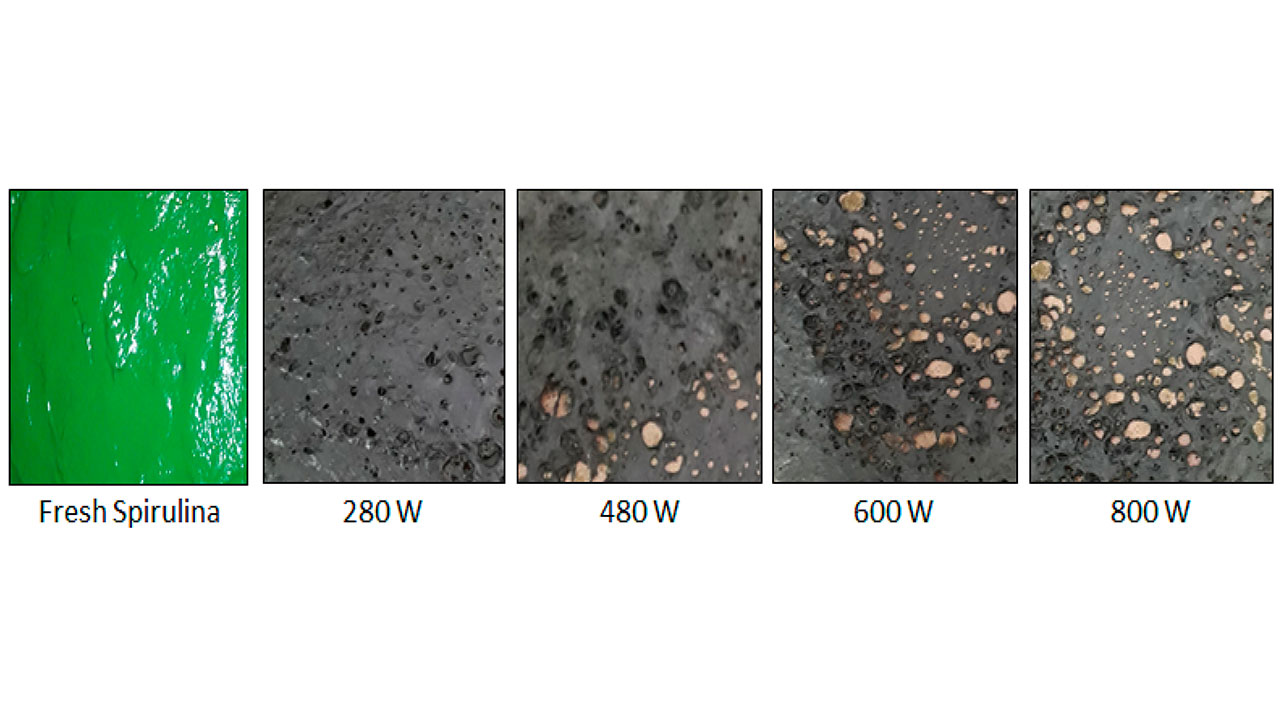Spirulina is a blue-green algae rich in nutrients, including proteins, vitamins, and minerals. Due to its numerous health benefits, it is widely used in dietary supplements. However, because most commercial Spirulina is grown in China, sterilization is essential in the production process for import into the United States and Europe.
Spirulina powders are produced by spray-drying the fresh paste in the treatment temperature range of 95-170 ℃ and then sterilized by microwave (da Silva et al., 2019).
Mechanism of Microwave Sterilization
The sterilization process involves two primary effects: thermal and non-thermal.
- Thermal Effect: When microwaves are applied to spirulina powder, they cause water molecules within the powder to oscillate rapidly. This rapid movement generates heat through friction, which raises the temperature of the spirulina from the inside out. The generated heat coagulates bacterial proteins, leading to their death.
- Non-Thermal Effect: In addition to heating, microwaves create an electric field that can alter bacterial cells’ membrane potential and structure. This disruption causes mutations in bacterial proteins, rendering them non-viable and leading to cell death.

Spirulina Powder Microwave Sterilization
Microwave irradiation, commonly used in S. platensis powder, still faces the problem of irregular heating of the load in the microwave (Bharti et al., 2022). Studies have revealed that Phycocyanin is susceptible to heat and begins to degrade when the temperature reaches 50 ℃ (Pez Jaeschke et al., 2021). The phycocyanin (valuable phytonutrient) degradation rate accelerates as the temperature rises above this point. This is mainly attributed to the denaturation of the Phycocyanin protein structure, leading to alterations in the chromophore stability and a color shift.
Standard Sterilization Methods for Powdered Spirulina
There are several methods commonly used for sterilizing spirulina powder:
- Ethylene Oxide (ETO) Sterilization involves using ethylene oxide gas to sterilize products. It is effective but has significant drawbacks, such as being toxic, flammable, and potentially altering the product’s chemical composition.
- Gamma Ray Sterilization: This method uses gamma radiation to kill bacteria and other pathogens. While effective, there are concerns about whether it might change the product’s chemical composition.
- Alcohol Steam Sterilization: This method uses high-temperature alcohol vapor to sterilize products. However, the penetrability of alcohol vapor can limit its effectiveness.
- Standard Temperature Ethanol Sterilization: This involves soaking the product in ethanol at room temperature for extended periods (over 10 hours), which can be inefficient and time-consuming.
To avoid all this destruction to your superfood, fresh Raw Living Spirulina avoids all this as it’s grown here in the USA and shipped fresh directly to your door the same day as harvest, so sterilization is unnecessary.


Leave a Reply
Your email is safe with us.